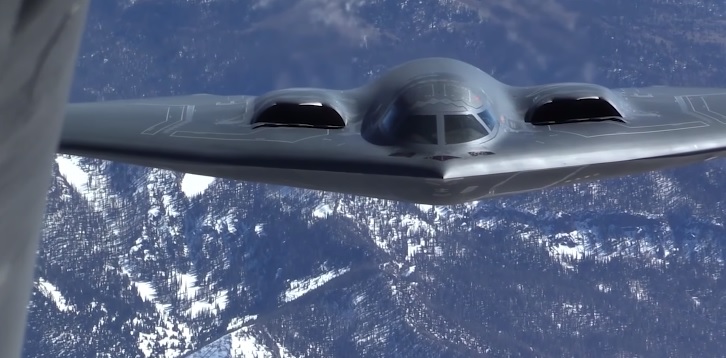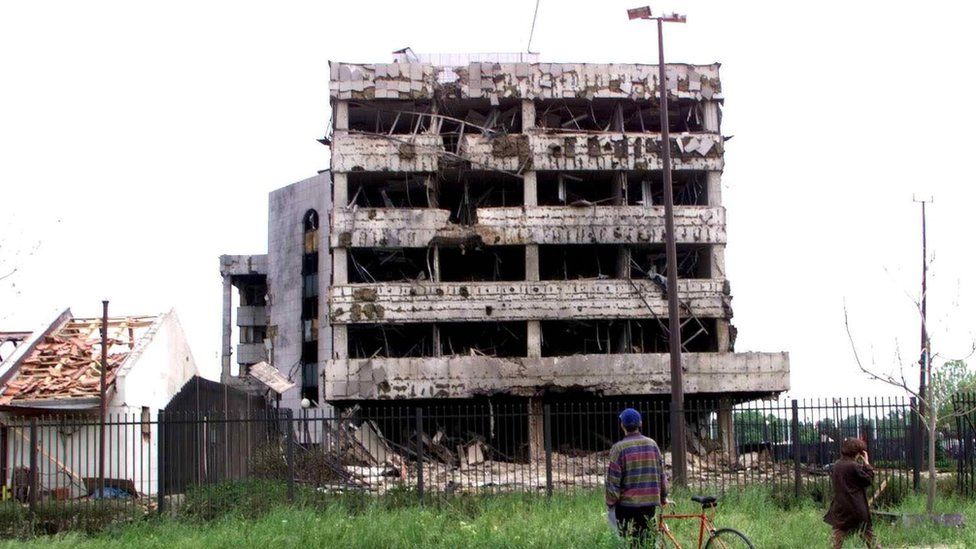The Chinese Embassy in central Belgrade was one of the B-2’s objectives, and when it was struck by three GPS-Aided Munitions on May 7, 1999, it led to the OAF’s largest diplomatic faux pas. As a result of the tragedy, which resulted in the deaths of three people, the Chinese authorities launched loud protests
The B-2A Spirit was designed to fight the Cold War, but it has since proven essential in the fight against terrorism and the “New World Order.” The Spirit is the go-to weapon when America strikes its adversaries early in a campaign due to its low observability, precise strike, range, and payload versatility. The first shots of Operation Allied Force (OAF) were launched by B-2s from the 509th Bomb Wing (BW), which is the only frontline user of the aircraft.
The Chinese Embassy in central Belgrade was one of the targets the B-2A Spirit Units in Combat targeted on May 7, 1999, and was struck by three GPS-Aided Munitions, as reported by Thomas Withington in his book (GAMs, the precursor to the GBU-31 satellite-guided JDAMs). The incident resulted in the deaths of three people and sparked raucous protests from the Chinese authorities. As soon as tensions rose, conspiracy theorists started conjecturing as to why the Embassy had been assaulted. One of the milder hypotheses circulated online involved “Cloak and Dagger” tales of the Chinese government acting as a covert communications channel for radio signals from the Serbian government to its forces in the field.
Months after the tragedy, two major European newspapers made the intriguing suggestion that the strikes were planned. The US and NATO wasted no time in declaring that the bombings were an accident in the moments following their detonation. Meanwhile, the UN ambassador for China condemned what happened as a “crime of war” and a “barbarian act”.
The war’s public face, British NATO spokesperson Jamie Shea, was awakened in the middle of the night in Brussels and told he would be speaking to the media the following morning. He would offer one of the first explanations of what had transpired along with an apology despite the limited knowledge that was available in those early hours. He stated from the briefing stage that the airplanes “struck the wrong building.”

“It’s like a train accident or a car crash – you know what has happened but what you don’t know is why it has happened,” he said to BBC 20 years later. “That took a lot longer to establish… But it was clear right from the get-go, that targeting a foreign embassy was not part of the NATO plan.”
It would take the US more than a month to fully explain to Beijing why three GAMs had struck the Chinese embassy, including one that hurtled through the roof of the ambassador’s home close to the main building but didn’t explode, perhaps saving his life.
The Yugoslav Federal Directorate for Supply and Procurement (FDSP), a governmental organization that imported and exported defense material, was the main objective, according to officials. Near the location of the embassy, hundreds of meters away, the gray office building is still standing.
At first, NATO anticipated the bombing campaign would end quickly with Milosevic withdrawing his forces from Kosovo and allowing peacekeeping to take over. However, it had already lasted for more than six weeks by the time the embassy was attacked. The US government’s Central Intelligence Agency (CIA), which is not often involved in target-picking, had decided that the FDSP should be struck in the haste to discover hundreds of new targets to prolong the aerial assault.
However, it now appears that the CIA had mistakenly targeted the structure as the Serbian Federal Directorate for Supply and Procurement by using an outdated map. It was given imagery and targeting coordinates, and it attacked the target as directed. The CIA, and ultimately President Bill Clinton, were much higher up the chain of command and held accountable for the error.

In a book, Pan Zhanlin, the Chinese ambassador who narrowly survived the attack, denied that the embassy had been used for rebroadcasting or that China had received parts of the US F-117 stealth fighter jet that Serbian forces had shot down in the early stages of the NATO campaign in exchange for its cooperation.
The bombing of the embassy was one of several incidents that demonstrated the US was waging a “new Cold War against China,” according to Liu Mingfu, a retired colonel of the People’s Liberation Army who is well known for his extreme views of the US.
“It was totally intentional. It was a purposeful, planned bombing, rather than an accident,” he said.
In exchange for the bombing, the US would pay China $28 million in damages. However, China was required to reimburse the US for close to $3 million in losses due to demonstrators who rushed the diplomatic district and attacked the British and American embassies with concrete, paint, eggs, and stones. The US gave the families of the deceased and injured another $4.5 million.
The Spirit and the 509th BW, on the other hand, were absolutely safe. James Kinnu, Northrop Grumman’s B-2A Project Manager, summed up his thoughts on how the B-2A performed in OAF by saying, ‘All of us who were fully knowledgeable of its capabilities saw it being deployed just the way it was designed. The ability to fly from Whiteman AFB, to go “black” near the European continent and have everybody try to find it, but nobody doing so. Then having it accurately deliver weapons on target, including the Chinese Embassy, which was a mistake but not by the bomber, and the ability to do it under all weather conditions’.
B-2A Spirit Units in Combat is published by Osprey Publishing and is available to order here.
Photo by U.S. Air Force and Sasa Stankovic/EPA/Shutterstock

